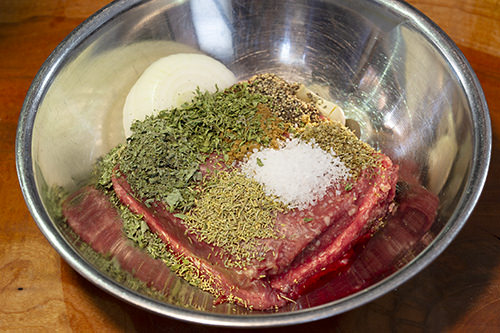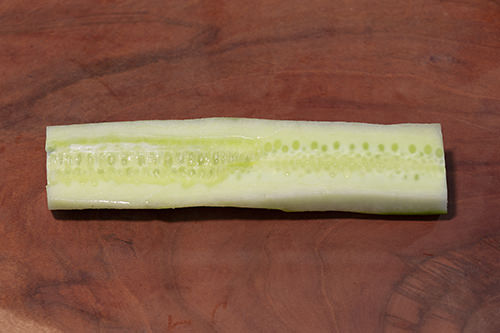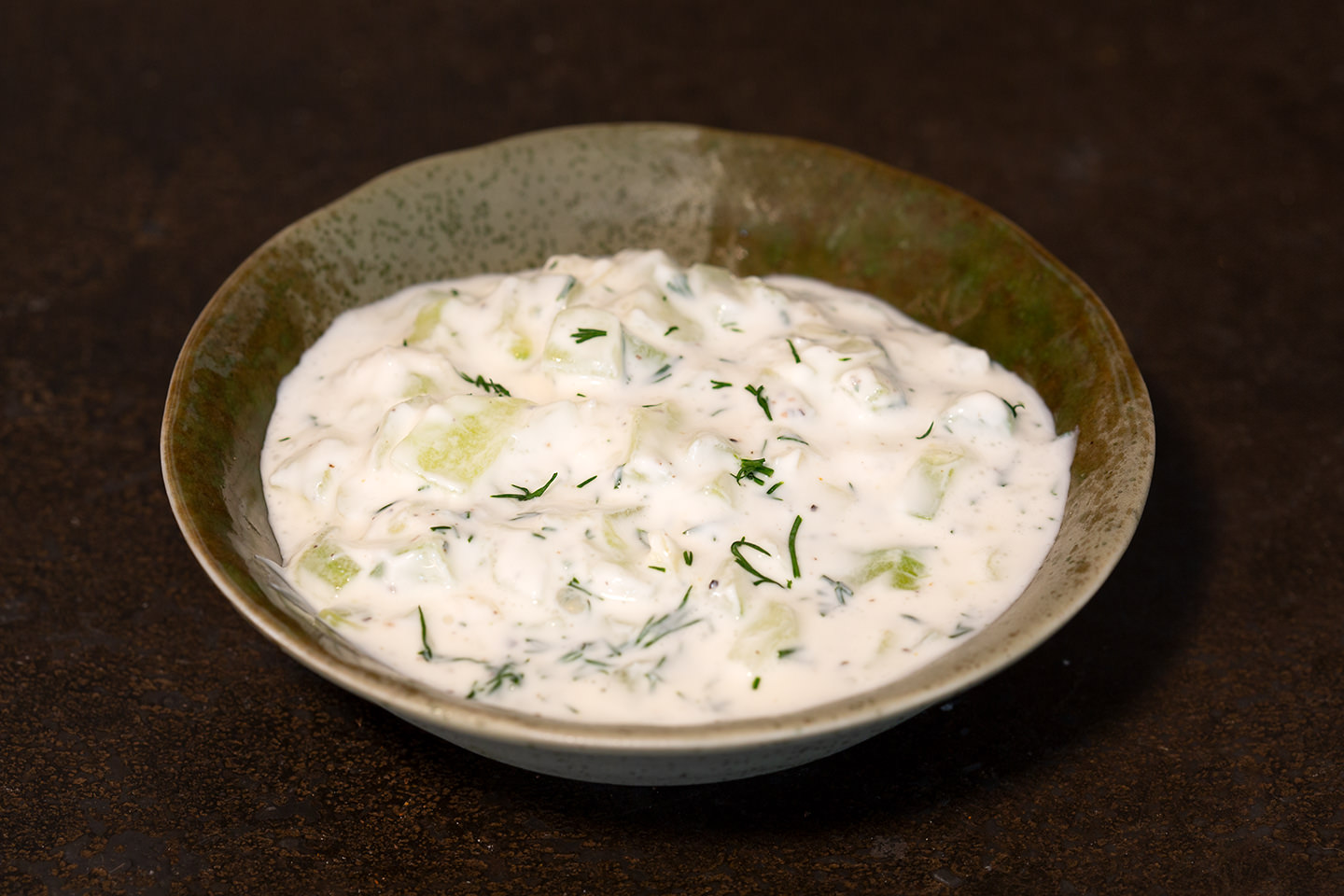Make the Perfect Homemade Gyro (YEE-Ro), Tzatziki Sauce, and Naan

Want to make homemade Gyros, Tzatziki Sauce, and Whole Wheat Naan? Yes, Naan, not flat Mediterranean bread – I just happen to prefer it that way.
During my childhood spent outside of Chicago, my friends and I were regulars in Greektown. Even if you haven’t visited Greektown, you can practically find Gyros on every street corner. One of my favorite dishes was the Gyro plate, consisting of gyro meat, raw onions, and Tzatziki Sauce. It came with Italian bread served alongside a delectable potato and garlic spread. However, in the mid-90s, I relocated to Central Pennsylvania, and finding Gyros became quite a challenge. There’s a local Greek Fest, but it only happens once a year. When you do stumble upon Gyros, they’re often made with frozen meat, mostly beef.
In my opinion, Gyros are truly exceptional when made with just lamb. I can almost hear the objections, but I urge you to give it a shot. I’ve experimented with a blend of half beef and half lamb, but an all-lamb Gyro is a culinary delight that’s hard to beat.
- Make the Perfect Homemade Gyro (YEE-Ro), Tzatziki Sauce, and Naan
- Steps to make Gyro meat
- Steps to TZATZIKI SAUCE (not that runny stuff)
- I prefer naan over mediterranean bread
- Steps to Naan
- Ingredient of the Day- Greek Yogurt
- Homemade Gyros, Tzatziki Sauce, and Naan
- SUBMIT YOUR OWN RECIPE
- We Would love to hear from you
- Joke of the Day!
Steps to make Gyro meat




Thinly slice the meat and sautee on each side. I used a steel pan, because it browns meat better than other types of pans.
The History of the Gyro
The history of gyros is a fascinating journey that spans centuries and crosses multiple cultures. Gyros is a popular Greek dish consisting of meat, usually beef, lamb, or chicken, cooked on a vertical rotisserie. It is typically served in pita bread with vegetables, sauces like tzatziki, and sometimes fries. Here’s a brief overview of the history of gyros:
- Ancient Origins: The concept of cooking meat on a vertical rotisserie can be traced back to ancient civilizations. The earliest known predecessor to gyros is likely the Turkish dish called “döner kebab,” which dates back to the Ottoman Empire. The idea of skewering and roasting meat vertically likely originated in the Middle East and spread to other regions.
- Influence of the Ottoman Empire: The Ottoman Empire, which spanned parts of Southeast Europe, Western Asia, and North Africa, played a significant role in the spread of this cooking method. The Ottomans introduced it to Greece during their occupation of the region in the late 15th century.
- Greek Adaptation: In Greece, the Ottoman-style döner kebab evolved into what we now know as gyros. Greeks adapted the concept, using a combination of lamb, beef, or chicken, and they seasoned the meat with various spices and herbs to give it a distinctive flavor. The term “gyros” itself comes from the Greek word for “turn” or “revolution,” referring to the meat’s rotation on the vertical rotisserie.
- Commercialization and Popularization: The commercialization of gyros began in the mid-20th century when Greek immigrants introduced the dish to the United States and other Western countries. They popularized gyros by opening restaurants and fast-food establishments, making it more accessible to a broader audience.
- Variations and Regional Differences: Gyros has evolved and diversified over time. In Greece, you’ll often find traditional gyros made with pork or chicken. In the United States and other Western countries, lamb and beef are more commonly used. Additionally, the choice of toppings and sauces can vary regionally and according to personal preferences.
- Global Popularity: Gyros has gained widespread popularity worldwide. It’s not only a staple of Greek cuisine but has also become a beloved street food in many countries. It’s often enjoyed in the form of gyros sandwiches or wraps, and variations of the dish can be found in many international cuisines.
Today, gyros are a beloved food enjoyed by people from various backgrounds, and its history is a testament to the rich culinary exchange that has occurred throughout the ages, blending elements of Middle Eastern, Ottoman, and Greek cuisine to create this delicious and iconic dish.
Steps to TZATZIKI SAUCE (not that runny stuff)




Tzatziki is a popular Greek sauce or condiment known for its creamy and refreshing qualities. It’s commonly served alongside various Greek dishes, particularly gyros and souvlaki, but can also be used as a dip or spread for a wide range of foods. Tzatziki is made from a few simple ingredients, and its primary components include:
- Greek Yogurt: The base of tzatziki is typically Greek yogurt, which is thicker and creamier than regular yogurt. Greek yogurt provides a rich and creamy texture to the sauce.
- Cucumber: Cucumber is grated or finely chopped and then drained to remove excess moisture. It adds a refreshing crunch and mild, slightly sweet flavor to the tzatziki.
- Garlic: Fresh garlic cloves are minced or pressed to infuse the sauce with a robust garlic flavor. The amount of garlic used can vary depending on personal taste.
- Lemon Juice: Lemon juice is added to tzatziki to provide a tangy and citrusy element that brightens the flavor.
- Fresh Herbs: Fresh dill, mint, or parsley are often used to enhance the sauce’s aroma and taste. Dill is the most commonly used herb in traditional tzatziki recipes.
- Olive Oil: A small amount of olive oil is sometimes added for extra richness and smoothness.
- Seasonings: Salt and black pepper are typically used to season tzatziki, but the amount may vary based on preference.
To make tzatziki, you simply combine the Greek yogurt, grated cucumber, minced garlic, lemon juice, fresh herbs, olive oil, salt, and pepper in a bowl. It’s important to refrigerate the tzatziki for at least a few hours before serving to allow the flavors to meld and develop. Tzatziki can be customized to taste by adjusting the quantities of ingredients like garlic, lemon juice, and herbs.
Tzatziki is a versatile condiment that complements a wide range of dishes. It’s often served as a dip with pita bread, vegetable sticks, or as a sauce for grilled meats like gyros, souvlaki, or kebabs. Its creamy texture and cooling properties make it a perfect accompaniment to spicy or savory dishes.

I prefer naan over mediterranean bread
This is a whole wheat Naan. The breads are similar and either bread will provide excellent results.
Steps to Naan
Naan is a type of flatbread that originated in South Asia, particularly in regions such as India, Pakistan, Afghanistan, and Iran. It is a staple in these countries and has gained popularity worldwide due to its delicious flavor and versatility. Naan is typically made from a simple mixture of flour, water, yogurt, yeast, and sometimes a bit of salt and sugar. Here are some key characteristics and information about naan:
- Ingredients: The basic ingredients for naan include all-purpose flour (often a mixture of wheat flour and sometimes a small amount of semolina), water, yogurt, yeast or baking powder, and a pinch of salt and sugar. Some variations may include additional ingredients like ghee (clarified butter) or milk to enhance flavor and texture.
- Leavened Bread: Naan is a leavened bread, which means it contains a rising agent like yeast or baking powder. This gives naan its characteristic soft and fluffy texture.
- Cooking Method: Traditionally, naan is cooked in a tandoor, which is a clay or metal oven with a high, open flame. The dough is slapped onto the hot walls of the tandoor, where it puffs up and cooks quickly, resulting in a slightly charred, crispy exterior and a soft, chewy interior.
- Varieties: Naan comes in various flavors and types. Garlic naan, butter naan, and cheese naan are some popular variations where additional ingredients like garlic, butter, or cheese are added to the dough or brushed on top for extra flavor.
- Accompaniment: Naan is often served with a variety of dishes, including curries, kebabs, grilled meats, and vegetable dishes. It can also be used as a wrap for sandwiches or as a base for pizzas.
- Cultural Significance: Naan has a long history in South Asian cuisine and is an integral part of many cultural and traditional meals. It’s often used to scoop up sauces and gravies in lieu of utensils.
- Global Popularity: Due to its delicious taste and versatility, naan has become popular worldwide and is readily available in many international restaurants and supermarkets.
Naan is prized for its soft, chewy texture and its ability to complement a wide range of dishes. Whether served as a side to a curry or used as a base for creative toppings, it’s a beloved bread that has made its mark on the global culinary scene.



Ingredient of the Day- Greek Yogurt
Greek yogurt, also known as strained yogurt or yogurt cheese, has a rich history that can be traced back thousands of years to the ancient civilizations of Greece and the Middle East. Here’s a brief overview of the history of Greek yogurt:
- Ancient Origins: The practice of making yogurt dates back to ancient times, with evidence suggesting that yogurt was consumed as far back as 5000 BC in the Middle East and parts of Central Asia. The process of yogurt-making likely developed independently in various cultures.
- Greek and Middle Eastern Traditions: In Greece and the Middle East, yogurt was a staple food. It was made by fermenting milk with the help of naturally occurring bacteria. This process involved allowing the milk to sit at a warm temperature, which allowed the beneficial bacteria to thrive and transform the milk into yogurt.
- Straining Yogurt: The key to Greek yogurt’s unique texture and flavor is the straining process. To make Greek yogurt, regular yogurt is strained through a cheesecloth or muslin bag to remove the whey (the liquid portion of yogurt). This straining process results in a thicker, creamier yogurt with a higher protein content compared to regular yogurt.
- Traditional Uses: In Greece and the Middle East, yogurt was and still is used in a variety of culinary applications. It was often eaten as a standalone food, served with honey or fruit for sweetness. It was also used in savory dishes and as a condiment in various recipes.
- Modern Commercialization: Greek yogurt as we know it today gained prominence in the late 20th century and early 21st century. Companies like FAGE (pronounced “fa-yeh”) in Greece and Chobani in the United States played a significant role in popularizing Greek yogurt on a global scale. They introduced Greek yogurt to international markets and developed commercial production methods that replicated the creamy, strained texture of traditional Greek yogurt.
- Global Popularity: Greek yogurt became a popular dairy product worldwide due to its creamy texture, high protein content, and probiotic benefits. It is commonly enjoyed as a healthy snack, breakfast item, or ingredient in various recipes.
- Varieties and Innovations: The popularity of Greek yogurt has led to various flavor and ingredient innovations, including the introduction of flavored Greek yogurt, Greek yogurt with added toppings, and Greek yogurt-based products like frozen yogurt and salad dressings.
Today, Greek yogurt is a global phenomenon, enjoyed by people of all backgrounds for its taste, nutritional value, and versatility in cooking and baking. It continues to be an essential part of Mediterranean and Middle Eastern cuisines, connecting modern consumers to a culinary tradition that spans millennia.
Joke of the Day!
“Why did the carrot break up with the potato? It could not handle the couch-potato lifestyle!”

JOIN US!
SUBMIT YOUR OWN RECIPE
We Would love to hear from you
We would love to hear from you. What is your favorite holiday recipe? Let us know in the comments below. If you have a recipe you think is amazing, feel free to submit it with link below.

